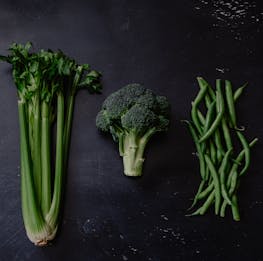Judging by the title, Eat Move Sleep, the premise of this book seems obvious. Number one, eat properly. Number two, exercise regularly. And, number three, sleep more. This all sounds simple, and familiar, right? However, despite how familiar this is, it's not that simple. The truth is we're failing at the basics, and Tom Rath is here to tell us why conventional wisdom isn't working.
Eat Move Sleep examines how everyday decisions have a detrimental effect on our quality of life. Through extensive research, we're shown that eating, moving, and sleeping form part of an equilateral triangle. In the past, we've focussed on these necessities, as stand-alone elements, but we need to combine them to lead healthier lives.
Tom Rath is an inspirational and bestselling author. At 16, he was diagnosed with VHL disease, which is a rare type of cancer. He also lost one of his eyes at 16, and he was told that his treatment plan would be to spend a week in the hospital every year going forward. Since then, Rath has lived with the reality that a new tumor could appear at any moment. However, this diagnosis convinced him to take control. As a result, he's spent a lot of time conducting extensive research on health and wellness. He's also looked inward, to critically evaluate his own choices. One of the crucial lessons that he learned, was that the seemingly insignificant health and wellness choices we make each day, are paramount.
Eat Move Sleep explains that previous approaches to diet, exercise, and sleep are flawed and that we need to see them as linked. Diet, exercise and sleep shouldn't be analyzed in a vacuum, and for this reason, the book isn't divided into separate sections. Instead, these fundamentals appear in every chapter. And, as we'll briefly see, this isn't just another book aimed at telling us what we already know.
The Core of the Problem
How often have you tried diets, or the latest eating fads? How often have you jotted down resolutions about beginning a new exercise routine, or joining the gym? And how often have you tossed and turned at night, worrying about your overall health and wellness?
For many of us, diets aren't beneficial because they're not a long term solution. Instead, diets are posited as a quick fix. We've all heard promises that we'll shed x number of pounds in just 30 days, by following some new fad diet. Diets are notoriously difficult to stick to because they don't deal with the psychology of eating. Furthermore, diets feel restrictive because they provide a very rigid framework based on guilt and scarcity. And, when it comes to exercise, we often lose motivation before we even begin.
We've heard it all before. And, for many of us, ideas around health and exercise seem like basic common sense. So if it's common sense, why do we fail to implement sound health and wellness choices?
While many of the core ideas in this book are common sense, and things that most of us know, Rath provides practical and useful tips to put these core ideas into practice. Often, it's not that we aren't aware of the information; it's that we battle to change bad habits and adopt new lifestyle changes.
Waking Up to More Sleep
Close your eyes and think about what makes a good day. Remember, this isn't about what makes the best day; just think about what constitutes a good day.
For most of us, a good day begins when we wake up. Often, the quality of our sleep affects how we face the day ahead of us. If we're not well-rested, the day gets off to a poor start, and we may even try to compensate for our lack of sleep by hitting the snooze button until we absolutely have to get out of bed. Very often, the snooze button eats into the time we could spend exercising or having a nutritious breakfast. How often have you compromised on exercise and breakfast, because you've felt the need to try and get in a few more minutes of sleep?
Almost every good day begins with a good night of sleep, because waking up and feeling well-rested sets the tone for the day ahead. A common excuse for not exercising is being "too tired," and a common excuse for opting for unhealthy food is, you guessed it, feeling "too tired and lazy."
So it all comes down to energy. In order to operate at our peak, we need to be energized. Let's use the metaphor of a battery. The things that make us fully charged and optimized are sleep, food, and exercise. We need these things to maximize energy to function in everyday life, and have as many good days as possible. Sleeping well, eating well, and exercising well, lead to maximum levels of energy, and energy is the stuff that gives us motivation, a positive attitude, drive, and determination.
Did you know that the average American has less than 7 hours of sleep per night? Many of us may think that's enough, but it's not when you take into account the "10008 and 36 minute rule." This rule may sound complicated, so let's break it down. You're likely to be familiar with Anders Ericsson's 10000 hour rule. This is the premise that to excel at something, you need to put in 10000 hours of practice. When Rath studied some high achievers and performers, he noticed that the elite performers were getting an average of 8 hours and 36 minutes of sleep every night. So while practice is vital, sleep is what gives us the edge. Sleep is a fundamental building block because it has a knock-on effect. Poor sleep leads to poor diet, procrastination, lethargy, etc.
So the first thing we all need to do is stop feeling guilty about having a good night's sleep. The bottom line is that no one should be sleep-deprived, and no one should be losing sleep to appear to be more productive. Sleep equals energy, which equals productivity. After all, every day starts with how we feel when we wake up.
So how can we get a better night's sleep? If we go back to our battery analogy, we should exercise more, and eat wholesome and nutritious foods. However, Rath also provides some top tips for getting into a good sleep routine, and how to regulate our sleeping patterns. It might be time to swap out the television in your bedroom for a white noise machine, and limit artificial light sources before bed.
Life Shouldn’t Be Too Sweet
We're living in an age of increased heart disease, diabetes, obesity, and cancer. According to Rath, we need to take more responsibility for our health and wellness because many of these diseases can be prevented. Rath's prevention rather than cure approach, guides us on a path towards reconfiguring our attitudes towards our bodies.
He posits that if we take control of our eating, sleeping, and exercise patterns, we will increase our overall health and be less likely to succumb to illness. The research shows that there are numerous simple ways that we can live longer and healthier lives.
One of the most significant changes we can make is to cut out excess sugar. Again let's look at the triangle. If we wake up tired, we're more likely to opt for sugary treats throughout the day, and these impact on the mindset that we have towards exercising. If we eat healthier, we're a lot more motivated to exercise and get a restful night's sleep. But why is sugar so bad for us?
Tom Rath calls sugar "cancer candy," and he argues that it's toxic. Numerous studies also show how sugar feeds cancer cells. The trouble is that modern food is laden with hidden sugar. It's so bad that on average, Americans eat 150lb of excess sugar per year.
If you take an average car tire, imagine piling seven of them on top of each other. That's roughly how much excess sugar we're eating each year. So the suggestion is to begin by cutting out all added sugar. The best way to start this process is by eliminating all of those sugary beverages. Soft drinks are the obvious culprit, but do you know that fruit juice is loaded with sugar? Better alternatives are tea and coffee, without the added sugar of course, and good old water. Sugar also finds its way into a lot of the carbohydrates that we eat. Anything refined should be avoided, and if possible, replace carbohydrates with vegetables. And another word of advice, while we may think it's better to opt for sugar alternatives, they often make us crave real sugar, so try not to give in to your sweet tooth, and eventually your body will adjust.
Small Decisions are Big
When we go grocery shopping, we often don't think about the long term effects of what we're buying. Our author explains that shopping for food shouldn't be seen as a banal activity that we can do while on autopilot. He argues that what we put in our body either has a "net gain" or "net loss" on our health.
This book guides us on what to eat, and it's mostly things that the majority of us already know. Intuitively we know what we should be eating; it's just that many of us lack the willpower. This is where our author offers some excellent advice. He says that we need to 'buy our willpower at the grocery store.'
Before we go shopping, we need to commit to buying healthy food that's beneficial to our bodies. By making healthy decisions in advance, we'll activate our willpower and be a lot less susceptible to buying junk food. What's more, if we don't bring junk food into the house, we won't have to use any of our willpower not to eat it. Hence, we'll have bought our willpower at the grocery store.
Strategic shopping is all about buying good healthy food so that we don't have to succumb to temptation at home. Rath argues that saying no at the first hurdle will make us a lot more likely to stick to healthy eating. Another tip is to shop with a list and with a plan. Actively avoid the sections of the grocery store that contain junk food. In fact, he says we should stick to the perimeter of the grocery store because this is where the majority of fresh food is. Humans are very suggestible, so cut off temptation at the source, and pre-commit to the idea that you want to buy, prepare, and eat healthy meals. And again, if we look at the triangle, healthy food, impacts on effective exercising, and a better night's sleep.
How to Measure Up
Did you know that sitting too much promotes weight gain, and is attributed to a higher incidence of diseases? You may think that sitting down for most of the day is okay because you generally manage to fit in a bit of daily exercise to keep you fit. However, we should be moving a lot more throughout the day, and shouldn't just be scheduling one time period per day, to get the majority of our daily exercise.
We're fully aware that exercise is vital for overall health and wellness. We also understand that exercise provides us with twelve hours of those natural mood boosters called endorphins, and increases our focus. And, you may even know that exercise has been scientifically proven to boost brainpower. So it begs the question, why don't we do more exercise if it has so many benefits?
Rath says we need to take control of what we can control, and that the only way we'll improve is by setting goals and measuring our progress. We can all set goals, but the only way to reach them is to measure how much we're improving every day. If we look at any scientific experiment, they all include a set of specific and measured results. We should view our bodies as a science experiment and aim to measure all things that indicate progress.
So begin by setting realistic goals, and then measure your progress every day. This doesn't just apply to movement, but to sleep and eating. By measuring your steps and progress, you'll be able to see that each change towards your goal is significant. Seeing changes, however small, are a huge motivating factor. Perhaps you can begin by counting your steps, analyzing what you're eating, and monitoring how much sleep you're getting. Taking this first step is crucial, because you can't improve if you don't know what you're looking at.
Our author has many recommendations for measuring our goals; for example, a pedometer is an excellent tool for measuring movement. Studies have shown that people who wear pedometers increase their daily activity significantly. And by significantly, we're talking over a mile per day.
However you choose to measure your progress, the critical insight is that measurement leads to consistency, and consistency is how we form new habits. Measurement also helps us make better choices.
In Conclusion
The success of Eat Move Sleep is that it gives us advice on how to apply what we already know about diet, exercise, and sleep. We know the basics, but the problem is we don't have any short term incentives to reach those long term goals. Rath provides us with a range of helpful strategies to make better choices a lot more often. By making better choices, the idea is that the right decisions will become an automatic response.
Rath views optimum health and wellness as the symbiotic relationship between each of the three elements. While many of us will have seen hundreds of books that focus on diet, or sleep, or exercise, our author argues that you can't lead a healthy life without considering the necessity of all three of these areas. Hence, this comprehensive guide shows us how we can optimize our wellbeing, by analyzing empirical research, and providing sustainable and actionable advice. So while we may be cognizant of the basic idea of what we should be doing, Eat Move Sleep shows us how to implement and measure the changes that we make.
Finally, we need to build these elements into our culture so that we can all live in a new and improved way. A way that looks at the knock-on effects of getting all of the elements balanced.
So how are you going to make tomorrow, and all the days that follow, a good day? Perhaps it's time to wake up refreshed, eat well throughout the day, and get moving.




